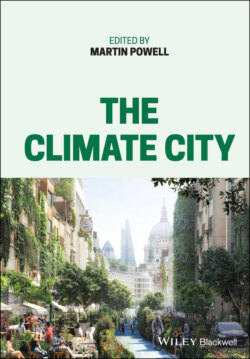Читать книгу The Climate City - Группа авторов - Страница 48
Masdar, UAE
ОглавлениеFirst conceived of in 2006, Masdar promised to be the world’s first planned sustainable city and spearheaded the plan to diversify the UAE’s economy from fossil fuels to green energy. Developers envisioned a city of 50,000 residents and 40,000 commuters from Abu Dhabi.36 It would be powered by renewable energy with driverless electric vehicles, water recycling, argon-insulated buildings, and wind towers.37
Masdar suffered a major setback due to the 2008 economic crisis, and since then barely any of the city has been developed and it has far exceeded its 2016 completion deadline, with it not predicted to have finished construction by 2030.38 Despite its claims of embodying the future city, Masdar now remains in the past; first conceptualized as the world’s first zero-carbon city, it may in fact remain just that – a concept. Its GHG-free status has also been abandoned, with the design manager Chris Wan arguing, “We are not going to try to shoehorn renewable energy into the city just to justify a definition created within a boundary. As of today, it’s not a net-zero future[,] it’s about 50 per cent.”39
Currently, the world’s only sustainable ghost town, Masdar houses only students studying sustainability at the Masdar Institute of Science and Technology, and it is another example of a well-intentioned but overly ambitious project that did not account for the overlap between technology and the political and economic climate that surrounds that innovation.
